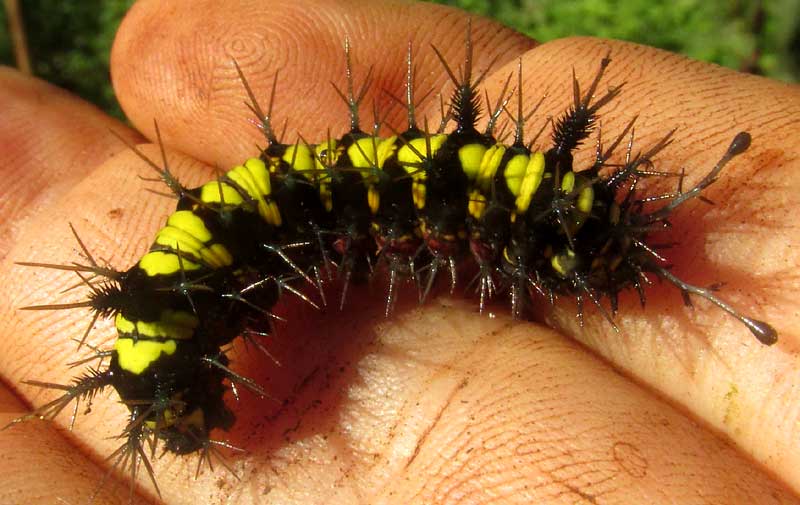Excerpts from Jim Conrad's
Naturalist Newsletter
from the October 12, 2018 Newsletter issued from Rancho Regenesis in the woods ±4kms west of Ek Balam Ruins; elevation ~40m (~130 ft), N~20.876°, W~88.170°; central Yucatán, MÉXICO
GUATEMALAN CRACKER CATERPILLAR
In the garden, about a month ago, a particularly eye-catching caterpillar turned up, shown below:

A close-up of the front end shows bulbous-tipped spines arising above the the head, simulating antennae tipped with eyes, and a crimson underbody, as seen below:

Such bright coloration must warn potential predators of the sharp, much-branched spines. But, what's the species?
In November of 2017, here at the rancho a caterpillar was found so formidably bristling with spines that its black-and-yellow-splotched body hardly could be seen. Volunteer identifier Bea in Ontario thought that it might be Automeris metzli, which you can compare with our present spiny critter at www.backyardnature.net/mexnat/automeri.htm
However, that species' spines display a different branching pattern, and the underbody isn't red. Once again it took Bea in Ontario to figure out that now we have something entirely different. It's the larva of the commonly occurring Guatemalan Cracker butterfly. Just this August we profiled one of those that had just emerged from its chrysalis. You can see that mint-condition cracker and the split-open exuvia from which it had just emerged at www.backyardnature.net/mexnat/cracker.htm
On that page you can see that the exuvia is so delicate looking that it's hard to imagine how it was formed by a caterpillar as spiny as what's in our pictures. However, on the cracker page, notice that the parts of the exuvia that formerly encased the antenna-like, foremost spines are bulbous-tipped, just like the spines.